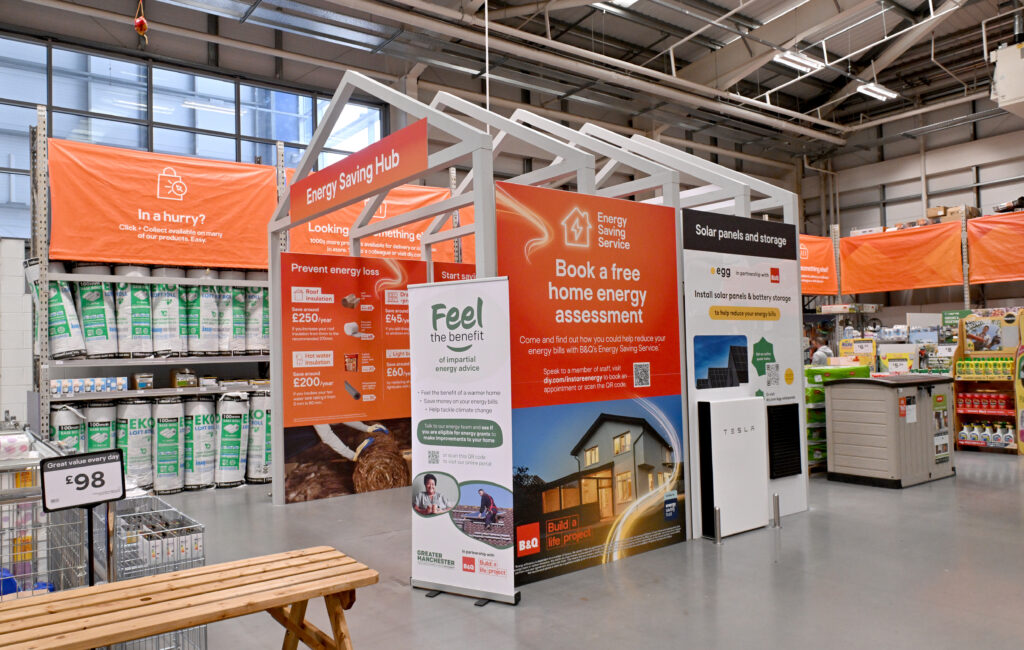Tesco has recently hit the news with its plans for a wider offering in its stores including nail salons, community space, sports shops and soft play areas. It also unveiled an upgraded Extra store in Watford with a Giraffe restaurant, Harris + Hoole coffee shop and a Euphorium Bakery under its roof and changes in other areas of the store.
Retailers have diversified before including the installation of cash machines, concessions and Post Offices in WHSmiths stores but making a store a ‘destination‘ looks set to become a bigger trend across the industry. After years where supermarkets raced to get more space, times have changed and bigger is not necessarily better – customers don‘t always want more – sometimes they want better, variety, an experience. The recent difficult economic climate coupled with us becoming different shoppers has led to vastly changed retail offerings to around five years ago. Many retailers are adapting to survive and prosper but the wayside is littered with businesses that did not and went bust due to jaded brands, too much borrowing, and the wrong stores. There are some legal issues, discussed below, to think about early on when considering changes to how the business trades at its stores.
The way we shop has undergone a transformation because of our changing lifestyles. Internet shopping has increased and is now common place, with statistics showing online shopping now accounts for roughly £1 in every £10 spent on retail and recent news that online sales rocketed by 222 per cent (equivalent to £20bn) over five years.
Despite the convenience of online shopping, consumers can find the amount of choice overwhelming and still want an experience and to handle goods before purchasing.
So, while physical shopping trips are still very much in demand, stores must satisfy other needs as we now also want variety, quality and something unique. There are an increasing number of specialist shops and farmers‘ markets selling artisan bread, local produce and pottering around these is an outing. Equally, high tech shopping ‘experiences‘ such as Apple stores are popular.
For convenience, big stores or shopping centres with everything on hand also hits the mark. ‘Physical stores and shopping centres will survive and thrive despite the challenges of internet retail and Europe‘s economic woes‘ says David Close, director for cross border retail at CBRE. It is these wide and varied shopping habits that retailers such as Tesco are tapping into.
However, before a retailer decides to ‘diversify‘ its store to meet shopper‘s changing needs, there are some essential legal points to consider:
- Alterations – what physical works are needed to go ahead?
Most retailers lease their stores and this means they will usually need their landlord to agree to the works even if they are internal only. Many leases will allow demountable partitioning without consent but not the cabling that is essential for plans. In large stores such as supermarkets there may be more flexibility to do such work without contacting the landlord.
- Planning permission – does the permission for the site allow you to go ahead or do you need to apply for a variation or new permission first?
Do the works proposed go so far as amounting to building operations or a material change of use both of which amount to development and require permission? Many permissions are not open A1 retail, but limit the type of goods that can be sold e.g. bulky goods only. Maybe your plans even go beyond pure retail use to include coffee shops, restaurants, an estate agency or another business offering a service (although an ancillary use does not need permission). There are sometimes changes you can make to the use without permission and the government is currently consulting about widening these, for example, to allow change from retail to use as a bank or a b
RELATED STORIES
















